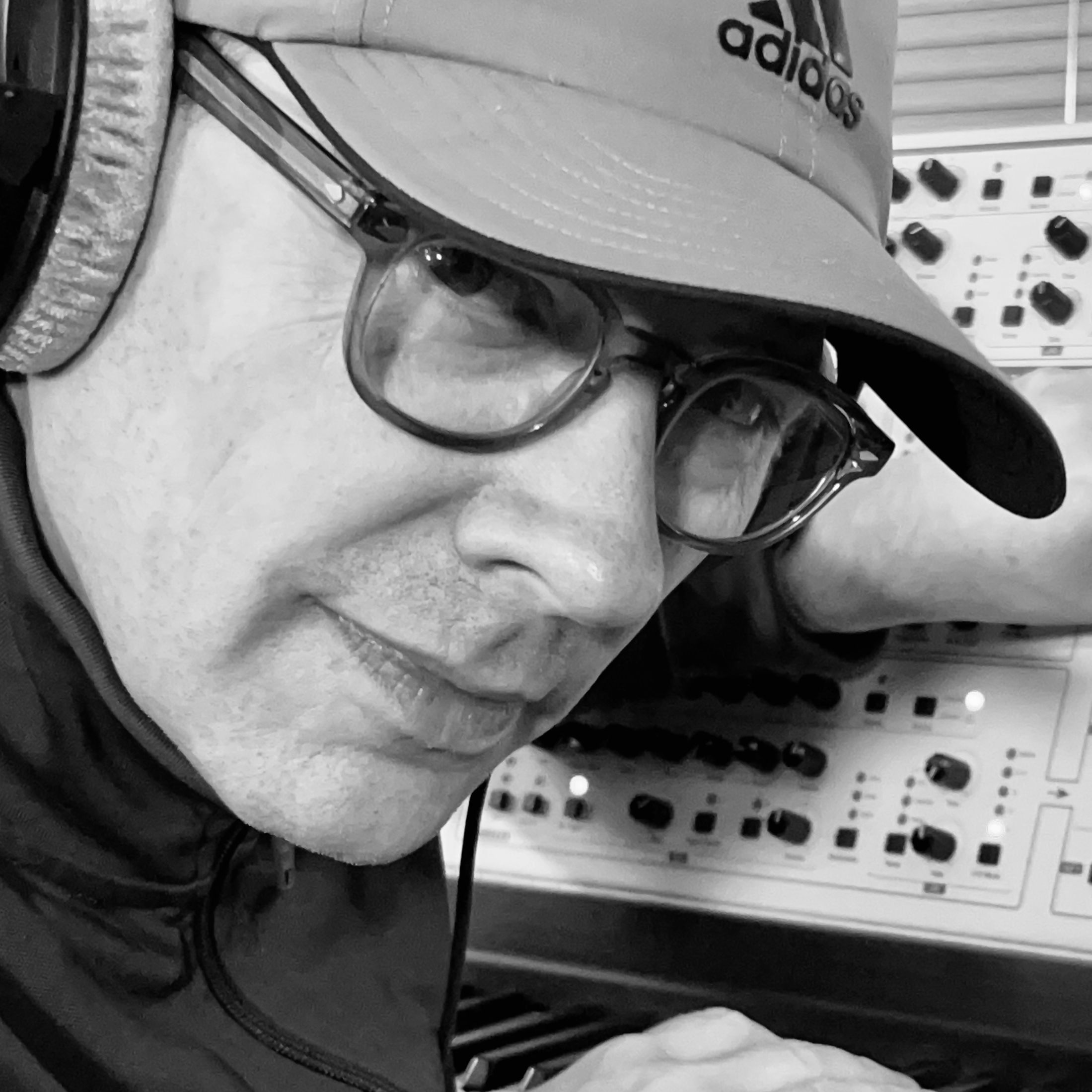“Don't construct a chord that uses eight notes - it’s unplayable on a guitar!”: How to humanise your virtual acoustic instruments in your DAW projects
Duff notes, timing errors and quirky performance choices are often the elements that underline the humanity of acoustic performances.
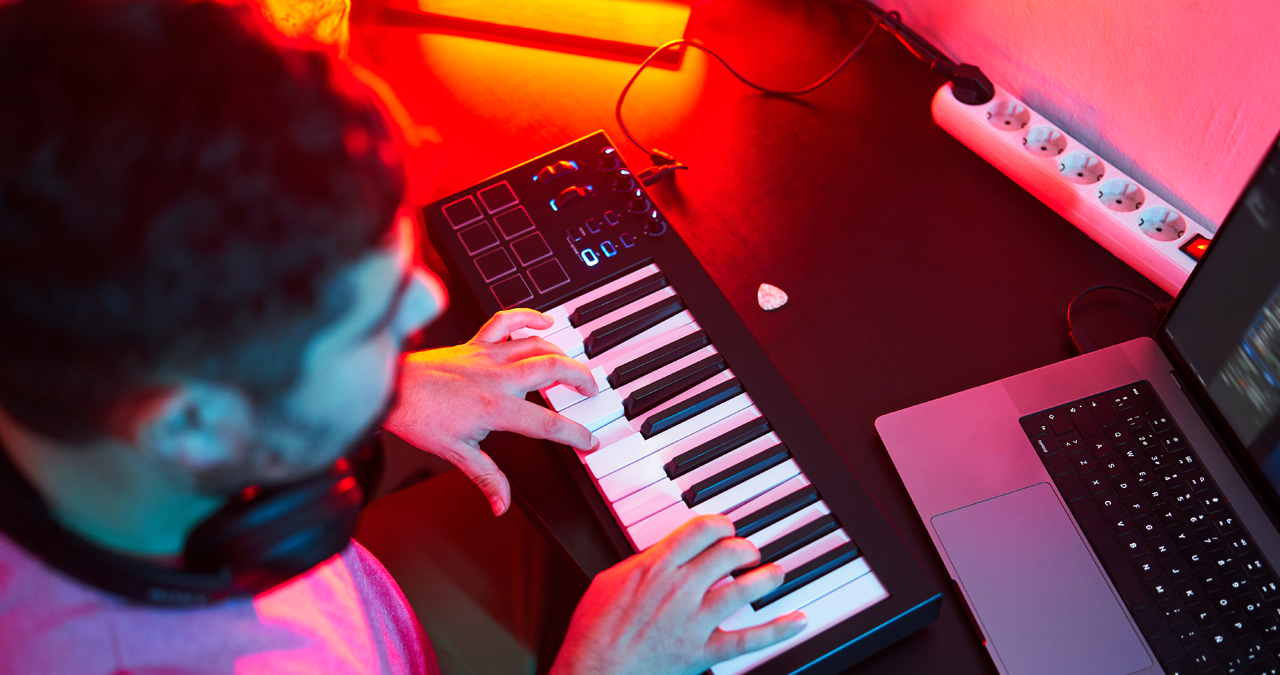
PLUGIN WEEK 2025: One point which is undeniable, is the immense power and ease offered by even the most humble of DAWs. But, as a consequence, we’ve also become accustomed to sidelining the human performance, and nowhere is that more important than with acoustic instrumentation.
The widespread and commonplace use of elements such as quantise and pitch correction, has resulted in some DAW-recorded music sounding a little sterile.
As we move towards an age where music can quickly and easily be generated by AI, many critics predict that the presence of an organic or humanistic performance will be the very thing that the public will want to continue to hear.
So if you yearn to make your tracks sound more acoustically believable, we explore some of the tricks of the trade, adding kudos to your performance credibility.
Let’s cut to the chase, and embrace a couple of basic but important points.
It might seem obvious, but if you are trying to sound like a specific acoustic instrument, it makes sense that you would want to seek out the best possible sound or sample that you can.
Don't rely on your eyesight! Just because a sound is described as a particular instrument, doesn’t necessarily mean that it will stand up to the test of sounding acoustically accurate. Thankfully, we live in an age where there are sample libraries to cover just about every corner of the instrumental globe, but even so, always question the description.
Want all the hottest music and gear news, reviews, deals, features and more, direct to your inbox? Sign up here.
Be objective, and decide for yourself whether or not the sound is realistic. Trust us, there are many sample libraries out there that do not always provide the sound that it says, on the tin!
The second point is less obvious, and more practical. Given that the majority of us are confronted by some form of pianistically-shaped keyboard, alongside our DAW, it's important to put yourself in the mindset of the instrumentalist that you are trying to reproduce.
It's no good playing a keyboard like a piano - if you are trying to sound like a guitar or a flute!
Always think about the way that a particular instrumentalist might approach playing their instrument. In the case of a guitar, it only has six strings, so don't construct a chord that uses eight notes - it’s unplayable on a guitar!
Similarly, flutes only play one note at a time, so unless you are constructing a flute section, play single lines at a time.
Most electronic music, and particularly more commercial styles, tend to engage large doses of quantise. This is the parameter which tightens up everything that you play, to the nearest specified note value. It leaves no room for rhythmic manoeuvre or error, locking everything that we play to the nearest specified note-value.
It’s certainly a useful function, but not for generating a humanistic and subtly imperfect performance.
Nowhere is this concept more obvious than with the instrumentation from the rhythm section of a band. Let's take the drum kit for a moment; if we quantise the kick, snare and hi-hats, they all land on a beat at exactly the same time. It creates an exceptionally tight sound, which we really like in the right placement and style of music.
Now, think of how a ‘real’ drummer may approach this; they may be hitting a kick drum, snare and hi-hat, all at the same time, using two hands and a foot.
Is it truly realistic to expect all of those elements to land exactly at the same time? If any of these elements are slightly adrift, with a slight error or inaccuracy, it’ll be perceived by the human ear as a good thing!
Strange as it might seem, we quite like small degrees of human inaccuracy, and when it comes to the nuance of performance, that inaccuracy translates to a better groove, in many cases.
We can apply a similar thought process to other instruments, such as the guitar or keyboard. If we consider the way that a guitarist plays, they strum (often using a plectrum) across six strings or less. The very act of strumming means that the notes will not all play at the same time. It therefore makes sense that if you are trying to replicate a guitar part on a keyboard, using a straight quantise will kill any chance you have of sounding like a real guitarist.
Similarly, when playing a piano part on a keyboard (and much like our previous example of a drummer), all the notes within a chord, will play a few milliseconds apart, which will be lost once quantisation is applied. Thankfully, there are some editing examples that we can do, to help create a level of realism.
If we return to our theme of strumming guitar, try playing a chord, but with one note quickly following another, much like a strum.
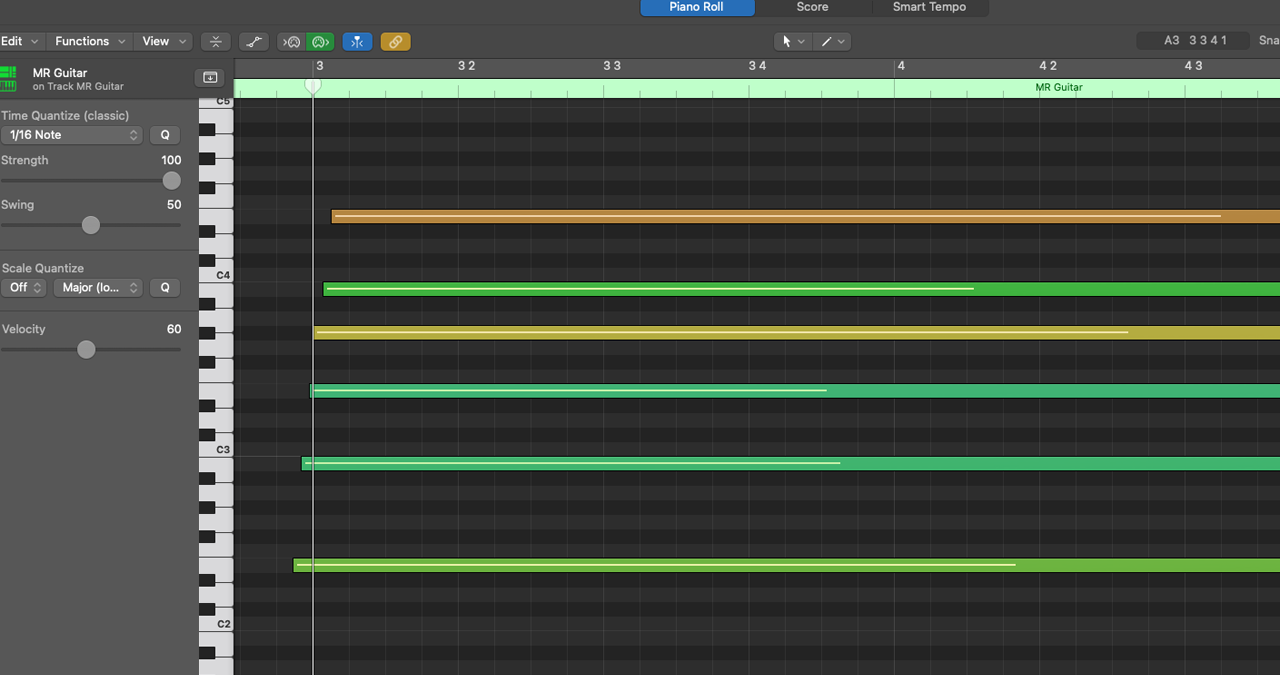
If this is tricky for you to perform at the keyboard, you can also achieve similar results with basic editing on the screen. In our example above, we have very slightly nudged the start of each note, to re-create the appearance of a guitar strumming. A slower strum, would require the start points to be further apart, whereas a tighter or faster strum, could be lessened.
Creating an effective piano part is even simpler, particularly if you find yourself reliant upon the quantise function.
Record a keyboard part, in your usual way, and then quantise it, as illustrated in the below image.
Locate your DAW’s ‘humanise’ page, and apply a very low level of humanise, concentrating on the timing of the front of each note. This will lessen the hammer-like effect, created by all the notes playing simultaneously. In our example, you can see the subtle deviation at the beginning of each note.
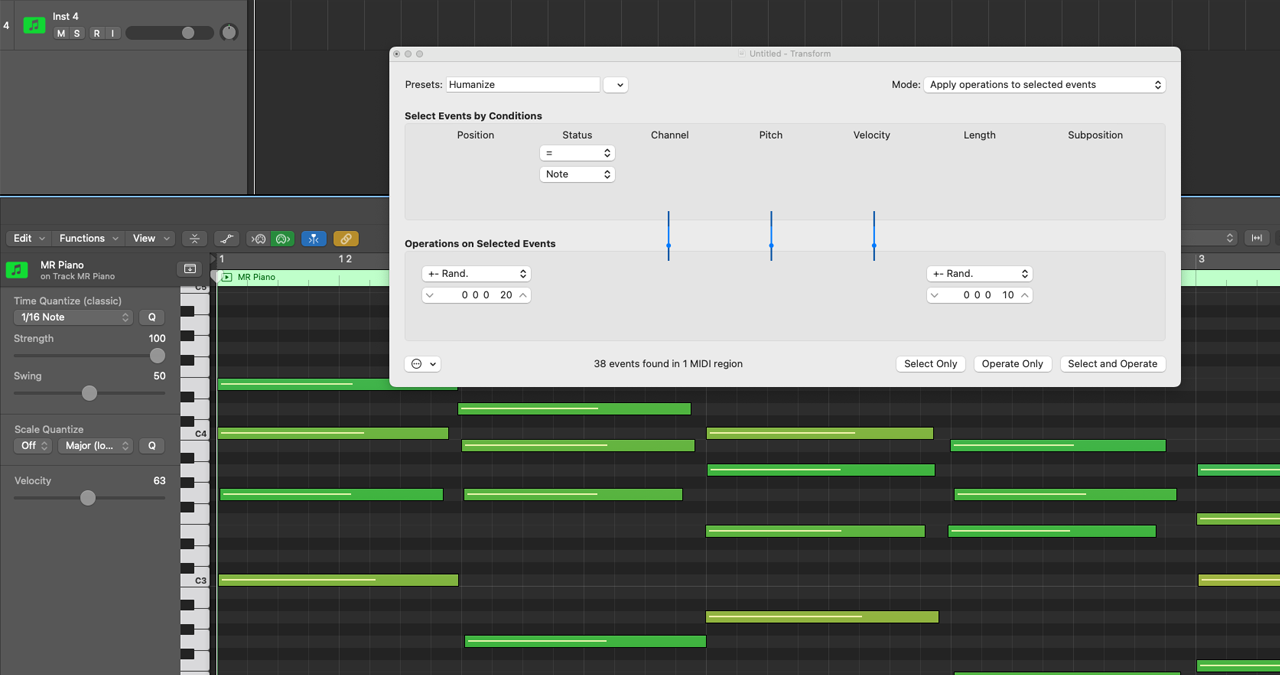
It's worth noting that the concept of these two operations can be applied to other instruments, so you could try humanising a bass part - particularly against a tight drum part.
Another useful setting, which is often overlooked, is ‘part delay’.
With the best will in the world, members of a band will never play entirely together. Bass players often tend to play a little way behind the drums. Try selecting a bass part, and just delay it by a few ticks or milliseconds. You can try a similar process with guitar and keyboard parts, but always be prepared to listen, and be objective to your delay amount.
Orchestral instrumentation is a slightly different beast, but one that can adopt similar traits and sensibilities to our rhythm section cousins.
One of the most fundamental differences with string, woodwind and brass instruments, is that (for the most part) they are monophonically constructed. Much like a monophonic synthesiser, they can only play one note at a time.
In some scenarios, they can adopt a form of extended technique which allows the playing of overtones (or additional notes on stringed instruments, through a technique called Double Stopping), but this does not tend to be the norm.
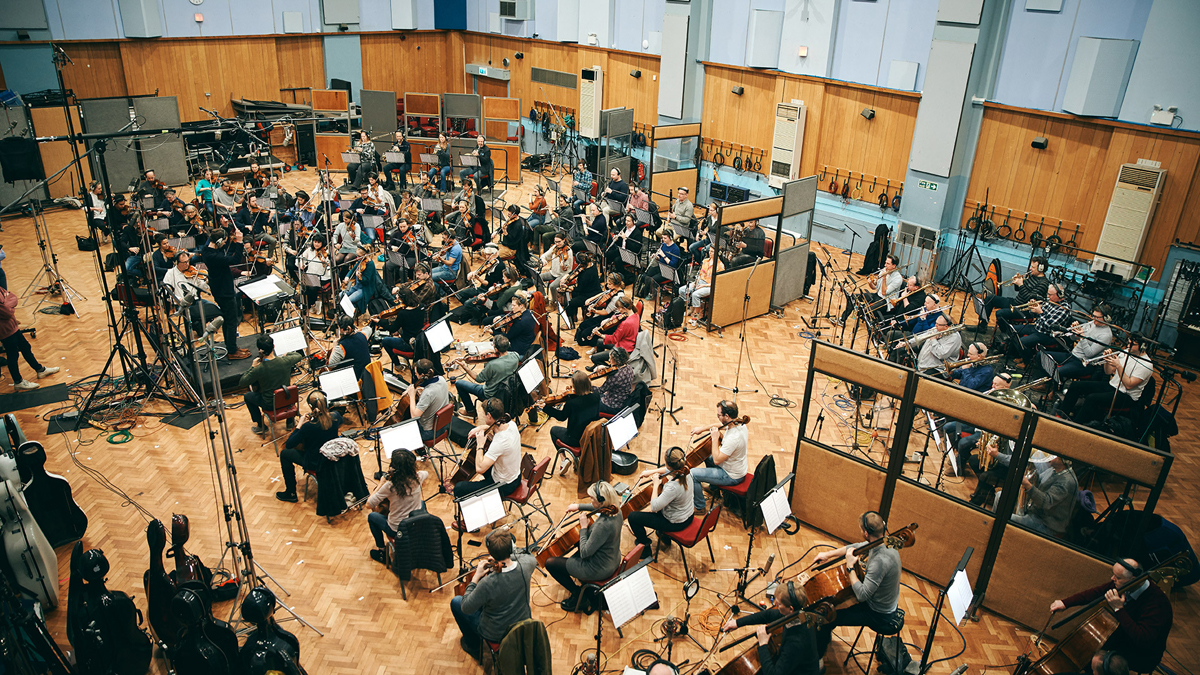
Because of the monophonic makeup of these instruments, they tend to be placed together in sections, comprising of a certain number of players.
It is this section arrangement that allows them to produce chords as a group. However, the monophonic design of the instrumentation also makes them ideal for playing lyrical phrases very smoothly.
In sample library terms, this is often regarded as the Holy Grail.
Great expense, time and effort is put into libraries that can recreate authentic legato performances. Legato is the musical Italian term, meaning ‘tied together’ or smooth.
If you are playing any one of these instruments from the keyboard, and if your library allows, try invoking a degree of dynamic expression, which is often applied with the movement of the modulation wheel.
If you don't have a modulation wheel on your keyboard, you can apply the parameter on-screen to induce a similar effect. Always try to avoid accidentally playing two notes at a time - it’ll be a dead giveaway that your lead instrument isn’t real.
If you find yourself working in particular styles of music, geared towards the acoustic, you would be well advised to consider the purchase of some of the more outstanding commercial products available. They could make life considerably easier, in your pursuit of the acoustic.
If you frequently require help in the drums, bass and keyboards departments, Toontrack is the one company that can help you.
Beginning with their entry-level EZDrummer, EZBass and EZKeys suites, Toontrack provides some of the finest acoustic band sounds around, shored up by outstanding playing, presented in MIDI file form.
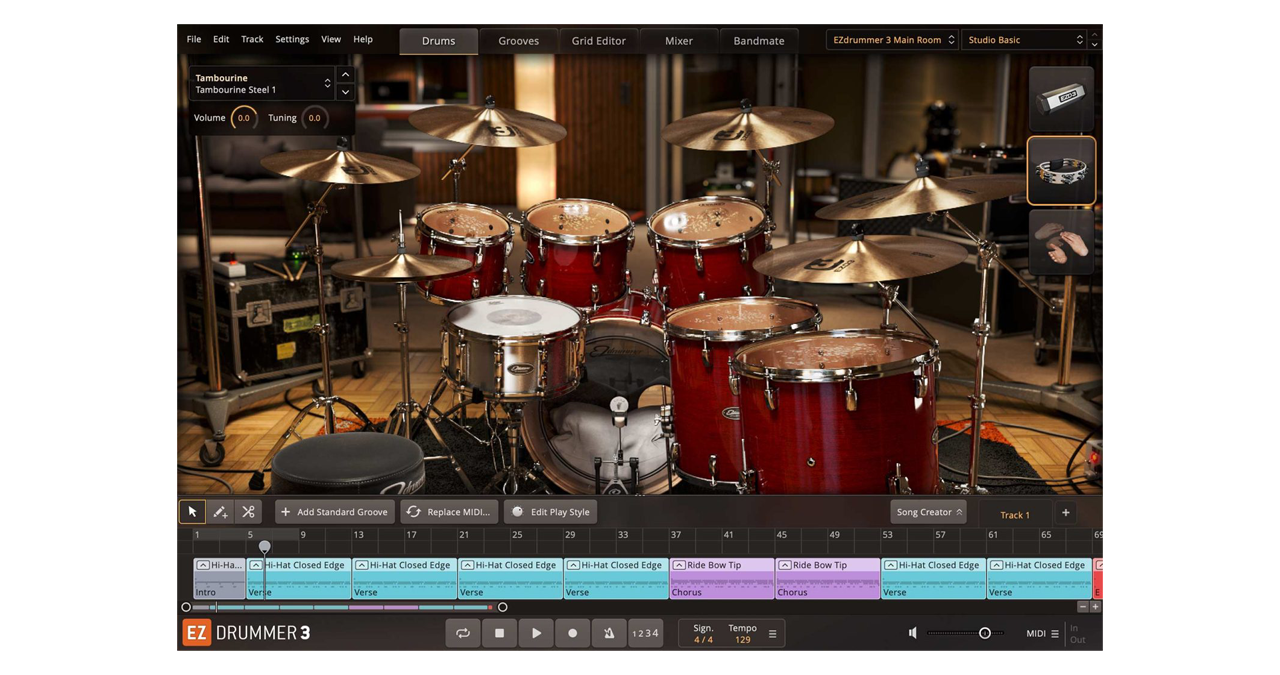
These can be dragged and dropped into your project. Entry-level they might be, but basic in sound, they are not!
Furthermore, Toontrack provides an extensive collection of expansion libraries, kits and sounds, geared towards specific styles of music. You can also elevate your drum tracks to the next rung, with Superior Drummer, which brings some of the finest kits recorded in the very best studios in the world, with outstanding studio drummers on hand to get your groove going.
Replicating lead guitar sounds is always a challenge, within the MIDI-based DAW, but for groove and rhythm guitar orientated, Native Instruments has produced a series of Kontakt instruments, from libraries such as Electric Storm to Acoustic Sunburst. There’s even a Session Ukulele library, should you want to go more folky.
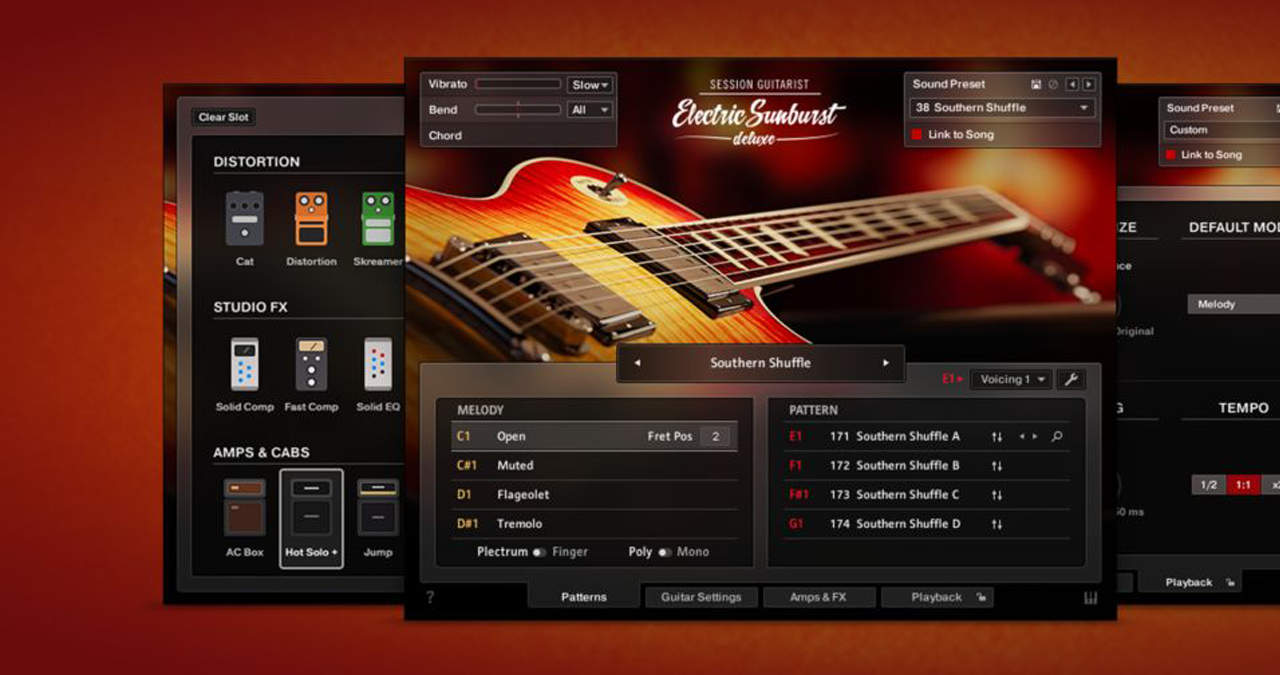
UJAM continues to produce their diverse range of Virtual Guitarist, providing rock styles to folk classics, all located within stylised plugin packages.
Orchestral sounds are also very widely available, with some of our favoured champions being Spitfire Audio, Audio Imperia and Cinematic Studio Series. Orchestral packages can be rather expensive, but there are cheaper alternatives, with no loss of quality.
East West offer an exceptionally enticing subscription service, called ComposerCloud+, allowing the downloading of their entire catalogue, for a mere $9.99 per month. They have an eye towards West Coast cinematic scoring, which is evident in their catalogue and quality of the samples.
Or for a slightly more affordable angle, Orchestral Tools offers a significant number of orchestral packages, with the added ability to buy instruments separately.
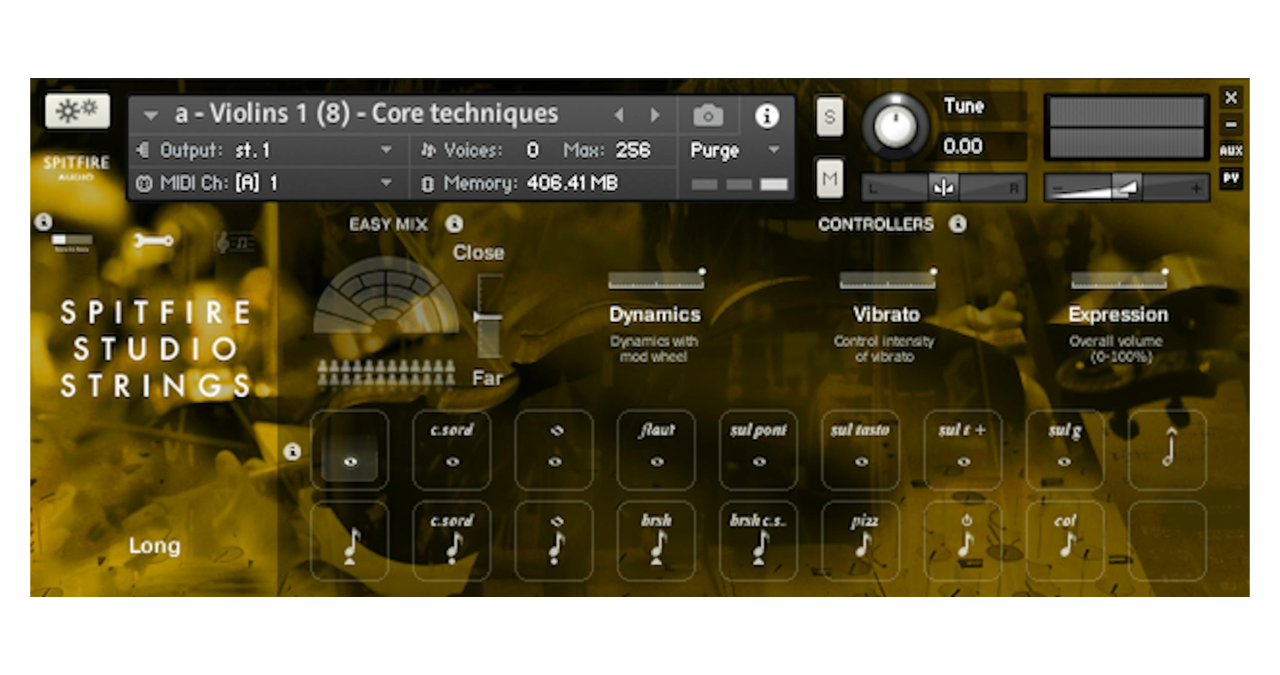
This means that if you only need violins, you can just buy a violin section, without the need to buy the whole string library. It will work out cheaper to buy the entire section, as an overall purchase, but it's certainly a consideration if working to a budget.
It's easy to get swept along with technology, and equally easy to forget the most basic philosophy of all - how does your track sound.
The watchword for success in replicating acoustic instrumentation - in the electronic domain - is to always think like the musician you are trying to replicate.
Doing a little research into tracks that inspire you could go a long way too, so never be afraid to learn from past masters, however young or old they may be.
Roland Schmidt is a professional programmer, sound designer and producer, who has worked in collaboration with a number of successful production teams over the last 25 years. He can also be found delivering regular and key-note lectures on the use of hardware/software synthesisers and production, at various higher educational institutions throughout the UK
You must confirm your public display name before commenting
Please logout and then login again, you will then be prompted to enter your display name.
